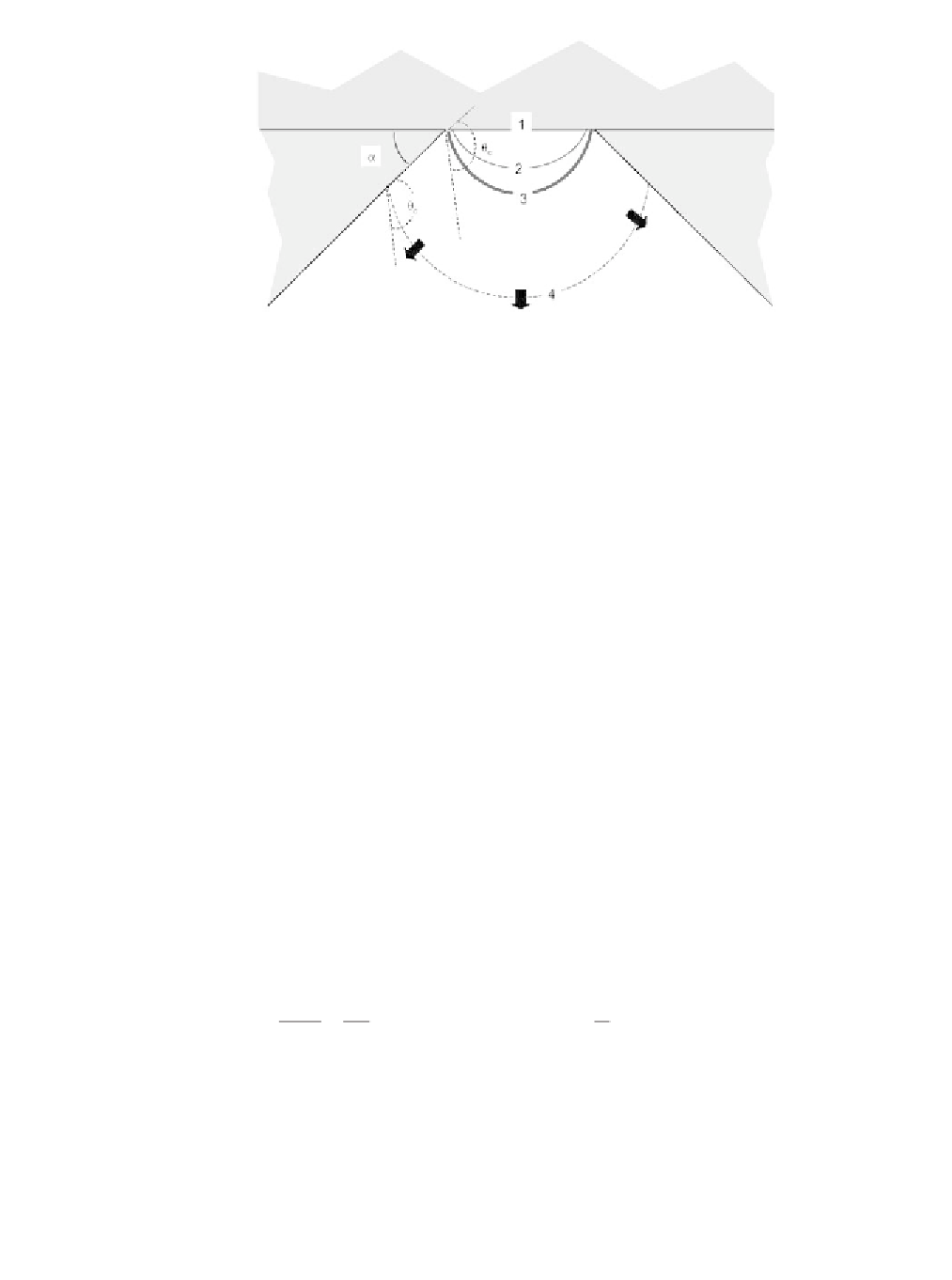Biomedical Engineering Reference
In-Depth Information
Figure 3.41
Under the effect of the pressure
P
1
, the interface bulges out. The interface stays pinned
until
q
>
q
C
. Case
q
£
a
+
π
/2: position 1 corresponds to
P
1
=
P
2
; positions 3 is the canthotaxis limit,
and 4 is the sliding of the interface.
Above this value, the interface cannot withstand the pressure difference and
irreversibly slides along the walls. The general condition for pinning when the pres-
sure
P
1
is larger than
P
2
is
æ
π
ö
θ θ
£
lim
min
=
α θ
+
,
(3.58)
ç
÷
C
è
ø
2
Relation (3.58) states that when the curvature increases under the action of the
pressure
P
1
, the contact angle increases, and when it reaches
q
lim
, the interface starts
sliding, like in Figure 3.40. When the interface stays anchored to the edges, a geo-
metrical analysis shows immediately that the curvature radius is given by
δ
δ
( )
(3.59)
R
θ
=
=
2 sin
(
θ α
-
)
æ
π
ö
æ
ö
2 cos
α θ
-
-
ç
÷
ç
÷
è
ø
è
2
ø
The maximum pressure that the interface can withstand, corresponding to the
minimum curvature radius of the interface, is
γ
D
P
=
(3.60)
max
R
min
where
g
is the surface tension between the two phases. Using the Heaviside function
H
, the maximum pressure difference across the interface is
é
ù
γ
2
γ
æ
π
ö
(
(3.61)
D
P
=
=
sin
(
θ α
-
)
+
H
θ α
-
-
1 sin
-
(
θ α
-
)
)
ê
ç
÷
ú
max
C
c
C
è
ø
R
δ
2
ë
û
min
3.7.3 Droplet Pinning on a Surface Defect
Local chemical and/or geometrical defects locally modify the contact angle. If the
defect is sufficiently important, or if there are a sufficient numbers of defects, the




